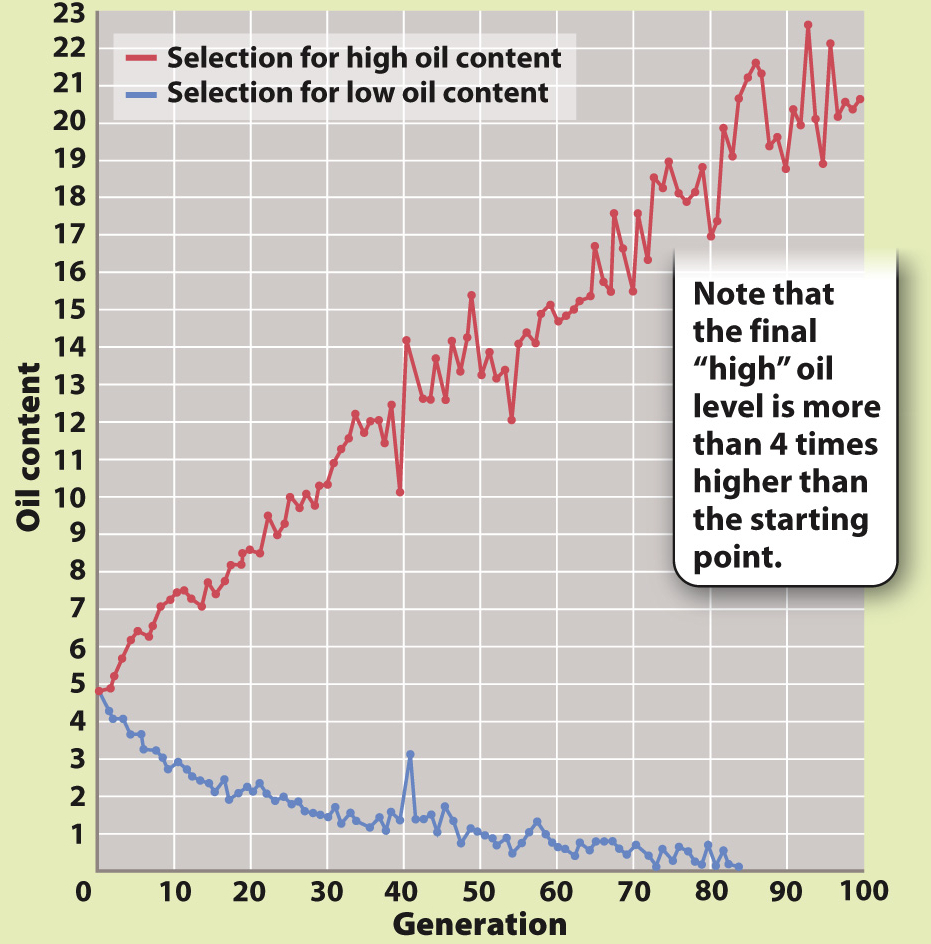HOW DO WE KNOW?
FIG. 21.10
How far can artificial selection be taken?
BACKGROUND Begun in the 1890s and continuing to this day at the University of Illinois as an attempt to manipulate the properties of corn, this experiment has become one of the longest-
HYPOTHESIS Researchers hypothesized that there is a limit to the extent to which a population can respond to continued directional selection.
EXPERIMENT Corn was artificially selected for either high oil content or low oil content: Every generation, researchers bred together just the plants that produced corn with the highest oil content, and did the same for the plants that produced corn with the lowest oil content. Every generation, kernels showed a range of oil levels, but only the 12 kernels with the highest or the lowest oil content were used for the next generation.
RESULTS In the line selected for high oil content, the percentage of oil more than quadrupled, from about 5% to more than 20%. In the line selected for low oil content, the oil content fell so close to zero that it could no longer be measured accurately, and the selection was terminated. Both selected lines are completely outside the range of any phenotype observed at the beginning of the experiment.

FOLLOW-
SOURCE Moose, S. P., J. W. Dudley, and T. R. Rocheford. 2004. “Maize Selection Passes the Century Mark: A Unique Resource for 21st Century Genomics.” Trends in Plant Science 9:358–